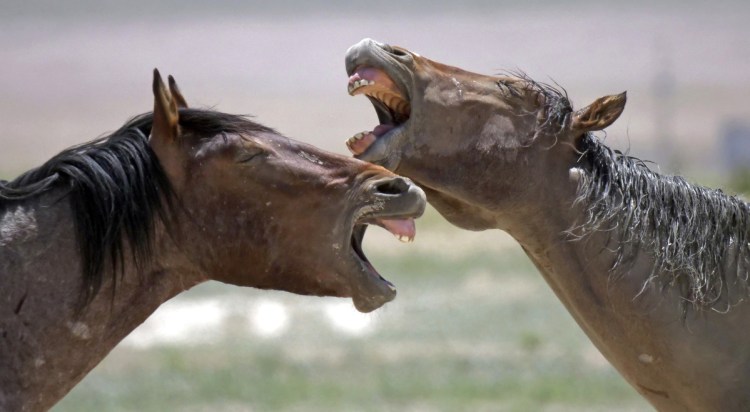CHEYENNE, Wyo. — If you ever wished to gaze at a stomping, snorting, neighing panorama of Western heritage from your living-room window, now could be your chance.
A classic image of the American West – wild horses stampeding across the landscape – not only has endured through the years but has multiplied past the point of range damage. Through May 3, the U.S. government is seeking more private pastures for an overpopulation of wild horses.
Many consider rounding up wild horses to live out their lives on private pastures a reasonable approach to a tricky problem. Wild horses, after all, not only have romantic value, they are protected by federal law.
Just keep in mind a few of the dozens of requirements for getting paid by the government to provide wild horses a home.
“It’s not like you can do this in your backyard, or even a 5- acre plot,” said Debbie Collins, outreach specialist for the U.S. Bureau of Land Management’s Wild Horse and Burro Program in Norman, Oklahoma.
You need a lot of fenced-in land, enough to sustain anywhere from 200 to 5,000 healthy horses.
Exactly how much land depends on pasture quality as determined by the government, but you can safely assume several hundred if not thousands of acres.
The pastured horses typically are left on their own with little human intervention. Still, they require continuous water and basic shelter from the elements, such as trees or a canyon; supplemental forage; and corrals for loading and unloading from trailers.
Participants in the private-pasture system must live in 14 Western and Midwestern states, from eastern Washington to the Texas Panhandle.
Over two-thirds of the 37 existing off-range pastures are in Oklahoma and Kansas.
And: These horses aren’t pets. They’ve had little exposure to people. Many are over 5 years old and therefore not ideal for training and individual adoption or sale, other options available through the BLM.
Still, there’s no shortage of interest in the off-range pasture program. People call all the time asking for details, Collins said.
“My only advice would be to go into it with your eyes wide open,” said Dwayne Oldham, a former Wyoming state veterinarian who has taken in wild horses on his family’s Double D cattle ranch outside Lander, Wyoming, since 2015.
Working with the government can be demanding, but providing for the over 130 horses on the Wind River Wild Horse Sanctuary on the ranch isn’t too difficult, Oldham said.
The sanctuary is open to the public. Tourists headed to Yellowstone and Grand Teton national parks increasingly stop there.
Copy the Story LinkSend questions/comments to the editors.



Success. Please wait for the page to reload. If the page does not reload within 5 seconds, please refresh the page.
Enter your email and password to access comments.
Hi, to comment on stories you must . This profile is in addition to your subscription and website login.
Already have a commenting profile? .
Invalid username/password.
Please check your email to confirm and complete your registration.
Only subscribers are eligible to post comments. Please subscribe or login first for digital access. Here’s why.
Use the form below to reset your password. When you've submitted your account email, we will send an email with a reset code.